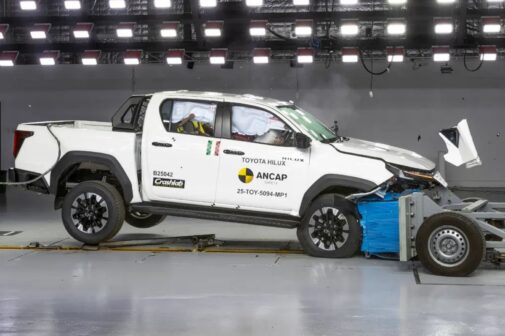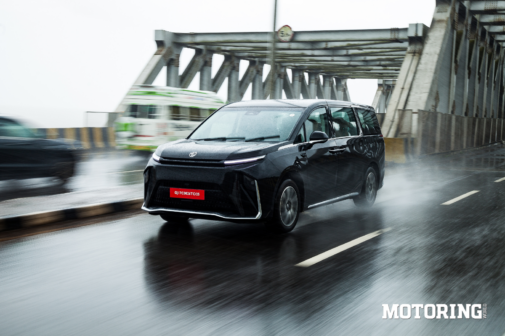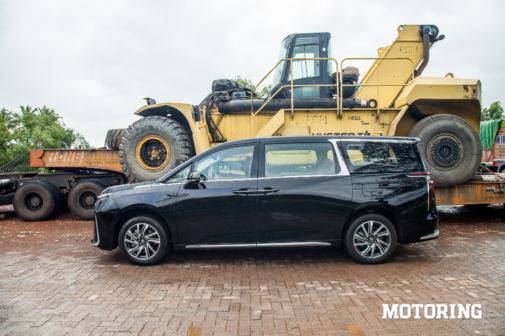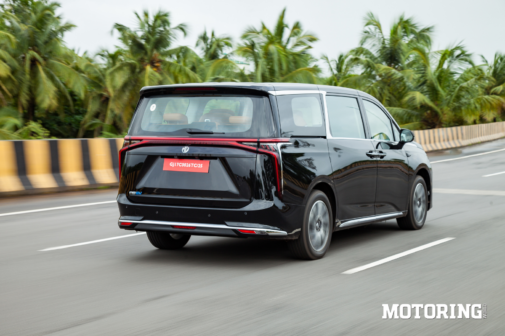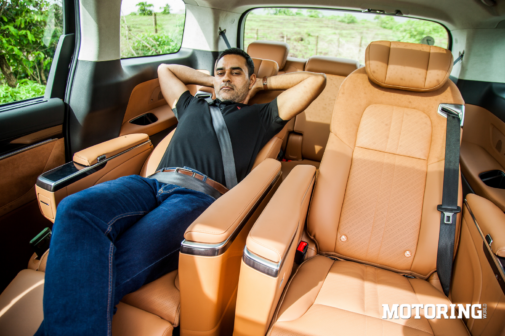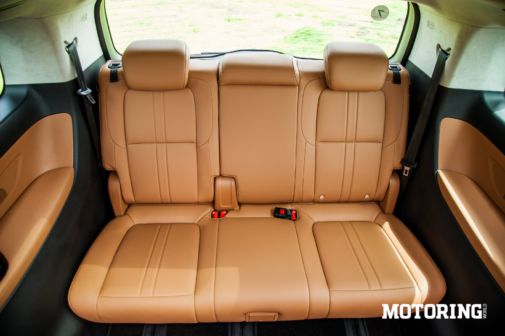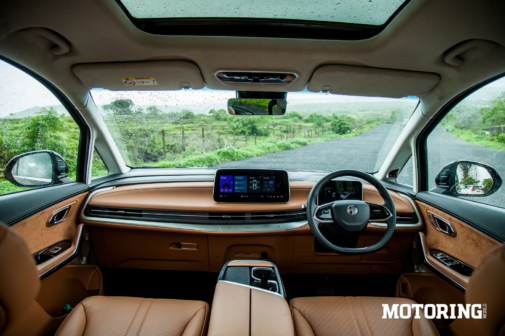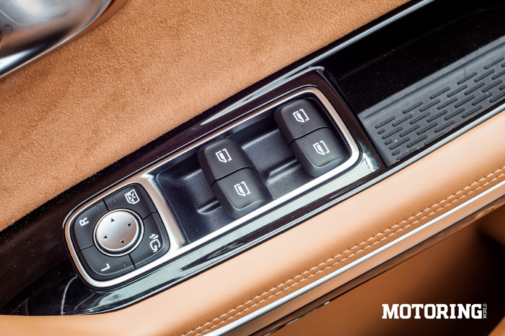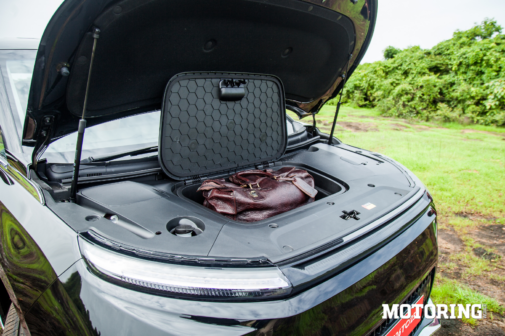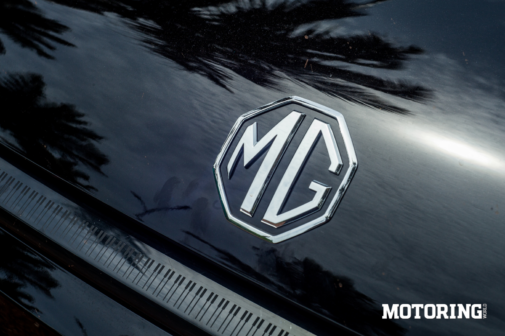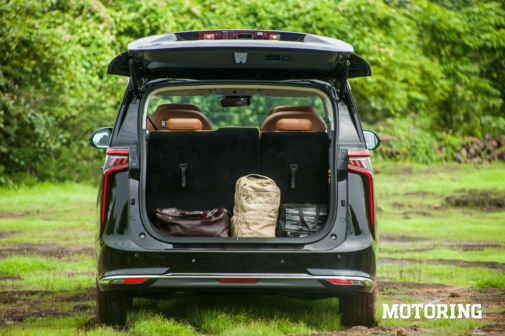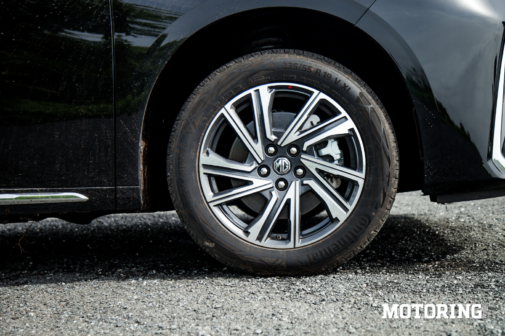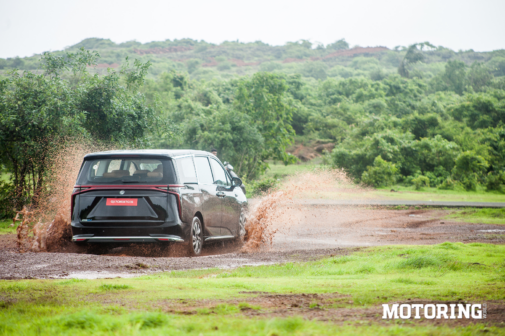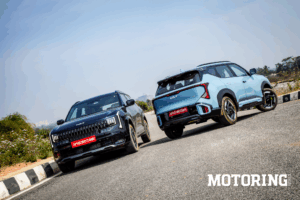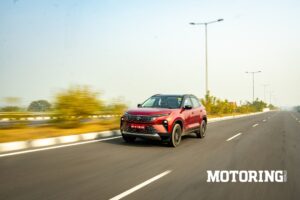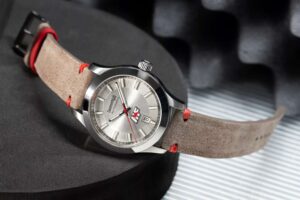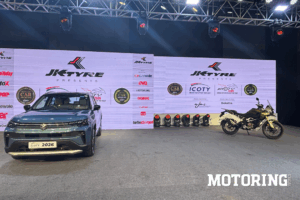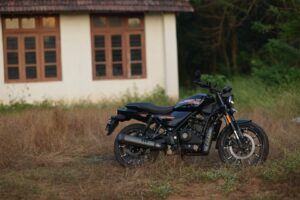I don’t know if this will influence your decision to buy it, but what is badged the MG M9 here is a vehicle called the Maxus Mifa (for ‘maximum, intelligent, friendly and artistic’) 9. The Chinese automotive behemoth SAIC bought the brand in 2009 after Maxus went bankrupt; it added MG to its vast portfolio two years later. The Mifa nee M9 has now landed on Indian shores, and what it wants to do is upend the luxury van game, currently dominated by the Kia Carnival and Toyota Velfire; the ace it claims it has up its hefty sleeve is the fact that it’s electric, unlike the other two – and that it’s the longest vehicle in the segment.
Luxury vans may look like boxes on wheels — and frankly, they are — but their sheer size, presence, and business-class-style interiors have made them the go-to choice for India’s jet-setters. There’s no pretending here: the MG M9 is unapologetically boxy. Viewed head-on, it has a wide, almost fish-like face — some might say it resembles a guppy — with a stubby bonnet and an upright windshield. Chrome accents along the sliding doors and windows do try to lend it a whiff of SUV presence, but it’s a van through and through.
Its sheer size is something to behold. At 5.2 metres in length and 2 metres in width, the M9 dwarfs even some full-size SUVs; a friend showed up to the shoot in her Jimny, and the M9 literally eclipsed it. The LED DRLs up front are quite tastefully integrated, while the rear features a full-width light bar that looks particularly striking at night. During the day, the tail-lamps blend in more discreetly.
The tailgate is powered — as it has to be — because it’s massive. During our monsoon-plagued shoot in Goa, we found ourselves standing under it like a porch roof, sheltering from the rain. It’s a reminder that this is a car built for practicality first, and aesthetics later. That said, it still grabs attention. Whether it’s because of its proportions or the VIPs it’s assumed to be carrying, people stop and stare.
Inside the M9, the shift from van to luxury lounge is immediate. The magic lies in the second row, where the twin captain seats are akin to first-class airline pods. They’re 16-way power-adjustable, offer both heating and ventilation, and come with an eight-mode massage function that feels authentic — none of that ‘cat walking on your back’ sensation you get in some other luxury cars.
A touchscreen embedded in the armrest controls everything from seating position to sunroof shades and ambient lighting. The interface is sleek enough, and frankly it looks like the BMW 7 Series’ touchscreen controls were the ‘inspiration’ here, but we’ll let that pass. Their usability suffers under direct sunlight, though, and they’re major fingerprint magnets. The seats recline nearly flat, and while they offer generous lumbar and calf support, one gripe we had was with the fixed footrests. For a car this focussed on luxury, the lack of an adjustable leg support seems like an oversight, especially when rivals offer it.
Entertainment screens are mounted on the back of the front seats, allowing for phone mirroring or browsing via an inbuilt internet connection. Adding to the practicality quotient, the M9’s rear cabin includes USB Type-A and Type-C ports, a 220V power socket, and MG’s V2L (vehicle-to-load) feature, which allows you to power external devices — or even another EV — using the car’s battery. Yes, you can charge an MG Comet with an M9.
While most MPVs treat the third row as an afterthought, MG has paid proper attention here. The third row accommodates three adults comfortably, offering commendable head and knee room. You also get individual AC vents, USB-A ports, and speakers, making it a genuinely usable space even for long drives. The cavernous interior is a direct benefit of the 3.2-metre wheelbase. The cabin feels lounge-like, spacious, and versatile, with 945 litres of boot space when the rear seats are folded down. There’s also a 55-litre front trunk, ideal for storing charging cables or smaller items. The M9 is tech-laden, too. The ambient lighting system offers 64 colour options, and the second-row passengers get dedicated touch controls for fan speed and temperature. Air purification systems, a panoramic sunroof, and a JBL surround sound system round out the features list.
However, not everything is perfect. The window blinds are manually operated, which feels like a missed opportunity in a car where nearly every other feature is motorised. Similarly, while the 12.3-inch central touchscreen is crisp and responsive, the 7-inch digital driver display feels small and, frankly, cheap for this car. The rest of the dashboard is minimalist— almost too much so. Most controls are housed within the infotainment screen, with only a few physical buttons for the AC. For a car that’s likely to be chauffeur-driven, that’s forgivable, but we would have liked a few more tactile controls.
MG was one of the first brands to bring Level 2 ADAS tech to India, and the M9 continues that legacy. It features seven airbags, adaptive cruise control, lane keep assist, emergency braking, electronic stability control, a 360-degree camera (which could use better resolution), and ISOFIX mounts. It has a 5-star Euro NCAP rating, and we expect it to perform similarly under Bharat NCAP, once tested.
The M9 is powered by a 90 kWh lithium-nickel-manganese-cobalt battery, driving a front-mounted motor that puts out 241 bhp and 35.7 kgm of torque. MG claims a range of 548 km (based on internal testing), though ARAI certification is still pending. In our drive across a bit of South Goa — through wet weather and loaded with gear and 4 adults — the M9 started with a 99 per cent charge and displayed 499 km of range. After the trip, we returned it with 220 km left on the clock, which seemed to support MG’s claim. Charging via a 160 kW DC fast charger takes about 90 minutes, while a home-installed 11 kW AC charger takes roughly 10 hours. MG’s app aggregates multiple charge point operators, lets you filter by charger type, and plan your trips accordingly. It’s one of the more useful EV apps on the market.
Despite its size, the M9 is surprisingly easy to drive. Its steering is light, acceleration is smooth, and visibility is excellent. On Goa’s narrow streets, it felt more manageable than expected. But not everything was perfect. In the middle row, we noticed a persistent suspension oscillation — an up-down movement — even on smooth roads, which was kind of strange. It wasn’t jarring, but once you notice it, it’s hard to ignore. Front and third-row occupants didn’t feel it as much, so this could be due to suspension tuning around the vehicle’s midpoint; MG would do well to address this. Body roll, however, was minimal thanks to the low-slung battery keeping the centre of gravity in check. It cruises confidently on highways, and remains composed even on less-than-perfect roads.
MG hasn’t announced pricing just yet, but internal sources suggest it will be positioned close to the Toyota Vellfire and Kia Carnival — likely in the Rs 80 to 90 lakh bracket, ex-showroom. That puts it in very rarefied air, but what you’re getting is unique: a proper luxury MPV that’s all-electric, packed with features, and genuinely spacious. It’s the best of both worlds; the silence and refinement of an EV with the comfort and extravagance of a limousine. Whether you’re a business magnate, a movie star, or simply someone who appreciates the finer things in life (with zero tailpipe emissions), the MG M9 is a compelling package, despite its shortcomings.
AUTODATA
MG M9POWERTRAIN
Battery:
Max Power:
Max Torque:
Range:
90 kWh
241.6 bhp
35.7 kgm
550 km (claimed)
TYRES
F/R: 225/60 R18
DIMENSIONS
L/W/H (mm):
Wheelbase:
Kerb Weight:
Ground Clearance:
5270/2000/1840
3200 mm
3200 kg
180 mm
PRICE
TBA









